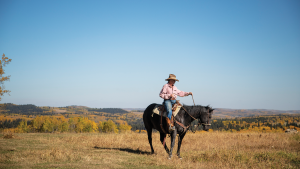Poop, it seems, has cracked the case wide open.
For two thousand years, historians have hotly contested the path Carthaginian general Hannibal Barca (247-183 BC) took to cross the Alps in 218 BC. With 25,000 footsoldiers, 6,000 cavalry members and 37 elephants at his back, Hannibal crossed the Alps to attack the Roman Republic at the start of the Second Punic War.
Horse poop discovered in the Col de Traversette—a narrow pass between a row of peaks located on the border between Grenoble, France and Turin, Italy—may be the archaeological evidence needed to settle the debate.
Using carbon isotope analysis, a team led by Bill Mahaney, a geologist and professor emeritus at York University in Toronto, has been able to date the fecal samples to around 200 BC (18 years shy of the historical date of Hannibal’s crossing).
In his upcoming book, Mahaney argues geological, topographical and environmental evidence found in the area greatly resembles the route described by the Greek historian Polybius in ancient literature. (Polybius is rumoured to have traveled Hannibal’s route himself.)
“I don’t think anybody’s gone after this from an environmental perspective before,” said Mahaney on his website. “The main objective is to identify sites worth geoarcheological exploration.”
The Col de Traversette is located 3000m above sea level and is known for its tough hiking. Chris Allen, a microbiologist and team member from Queen’s University Belfast, calls the route “torturous”.
Sir Gavin de Beer, an English zoologist, proposed the route over a hundred years ago. Academics at the time scorned the idea because of the extreme difficulty of the crossing.
The team’s answer to that point today is speculative.
“He may not have had a choice at all,” said Allen in an article for The Conversation. “Hannibal wasn’t just worried about the actions of the Roman army at this time. In these relatively ancient days there were Gaulish tribes in the region, a major military force, and Hannibal may have been forced to take this more difficult and unexpected route to avoid a devastating ambush.”
The team’s findings were published in the academic journal Archaeometry.





